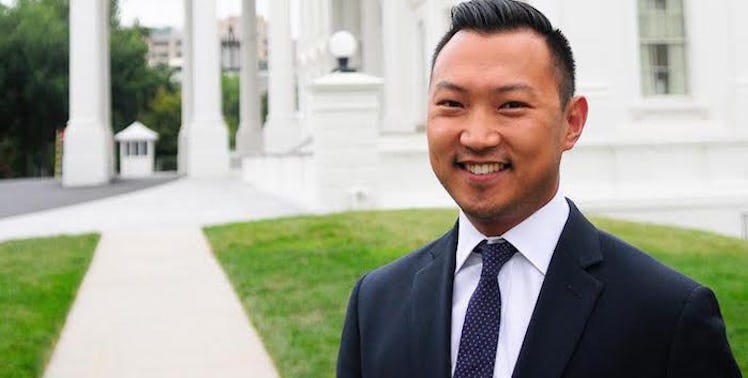
How I Went From Reality TV To The Presidential Innovation Fellows
Back in early 2012, I was serving as a Department of Defense civilian working on a White House initiative called Biosurveillance.
A colleague casually mentioned this new engineering TV show she heard about on Discovery Channel during a typical "water cooler" chat. She described it as "ridiculous" and suggested I apply because she said I was "kind of ridiculous too," a funny and quickly fleeting thought.
That night, on a whim, I sent a very short email and headshot with a few minutes to spare before the midnight deadline.
Little did I know, it would change my life forever.
The casting call process was a six-month blur: submitting an audition video, LA casting calls where I was hit by a car coming down PV on a bike two hours before my on-screen interview, and finally filming the competition where I was stuck in a house with nine other strangers for seven weeks.
After all was said and done, I watched myself compete on Discovery Channel's "The Big Brain Theory," better titled "Top Engineer" before it was changed the first day of filming.
Once you have a taste, you'll never go back.
The return to normal, everyday life was difficult. The hardest transition was going from high-intensity, 14-hour workdays, creating things with a camera in my face to a government lifestyle of barely working eight-hour days.
At work, I was focused on how we’d restructure a government program to be "innovative," leveraging lean, agile development similar to how startups operated. While working on this effort, the startup itch took over and my focus shifted towards the private sector, beginning my entrepreneur streak.
Since then, I have cofounded the Baltimore Foundery, a non-profit makerspace delivering access to and education about industrial grade tools (cofounded with a contestant from the TV show, Corey Fleischer); CommonKey in New York City, a security software startup providing team password management; and MegaBots, Inc. in Boston, a hardware startup building giant fighting robots for glorious arena combat (cofounded with another contestant, Gui Cavalcanti).
Kumar Sends Andrew to The White House
In early 2014, I had a conversation with Kal Penn, host of "The Big Brain Theory," star of "Harold and Kumar Go To White Castle" and former Associate Director of the White House’s Office of Public Engagement during President Obama’s first term.
We were talking about random things and ended up on the topic of civil service, the White House and our projects since the TV show. From that conversation, he introduced me to Phil Larson, former Senior Advisor for Space and Innovation at the White House Office of Science and Technology Policy and now at SpaceX.
This was my first introduction to the Presidential Innovation Fellows. Inspired by the mission of helping the government better serve citizens through technology, I threw my hat in the ring to be part of the 2014 class.
I went through the application process to become a fellow, a very long process that has since been greatly shortened to on-board fellows at the "speed of need."
Later that year, I was offered to join the fellowship in September. Unfortunately, I was in the middle of building giant fighting robots in Boston and declined the opportunity, thinking it was a nice thought, but perhaps, just poor timing.
The Great Migration to Our Nation's Capitol
As MegaBots, Inc. headed to the West Coast to kick off the new year, I had the opportunity to consider other opportunities. Over a series of conversations with Garren Givens, Director of the Presidential Innovation Fellows, it was clear I still had a strong desire to have an impact on my country.
So I returned to DC where my tour of the East Coast first began.
I now serve as the Director of Product and Technology for the Presidential Innovation Fellows, recently made permanent by President Obama through the signing of an Executive Order.
The broader focus of the program is to recruit and support the best-in-class innovators, entrepreneurs, executives and technologists across our country and partner them with the best change-makers and innovators inside government to deliver on high-impact initiatives.
It’s a tremendous problem and won by small waves (read: wins through delivery) that’ll move the giant federal government ship in the right direction.
The call-to-action is simple.
There's nothing greater in our professional careers than leaving a positive impact on as many people as possible. Serving your country through building better technology in government is that reward and honor.